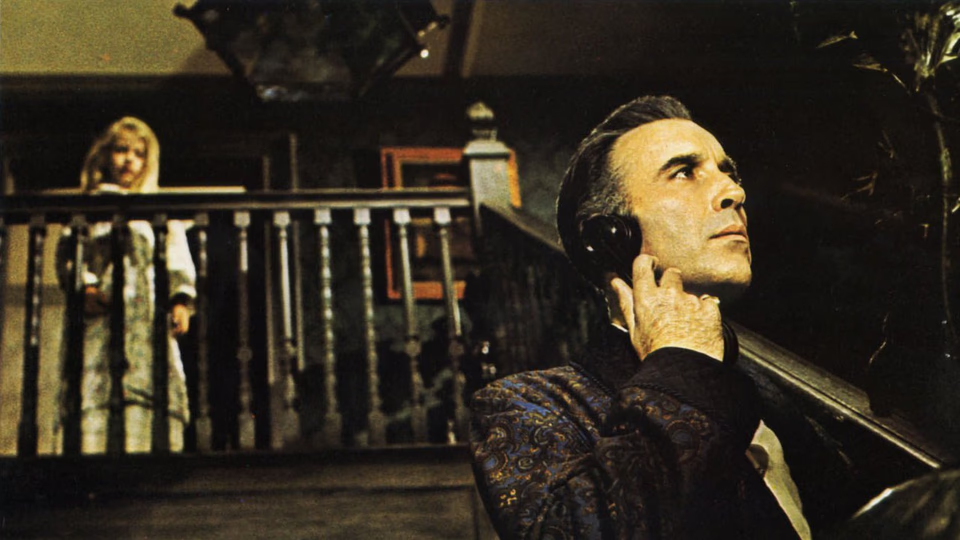The House That Dripped Blood

Reviewing anthology movies is hard. I picture you, dear reader, trudging through endless paragraphs of plot synopsis and I feel guilty. I have let you down.
My duty as a reviewer is to describe the film. My job as a writer is to respect your time and attention.
And so my challenge is to describe the picture in a succinct manner that holds your interest. Not that different, I suppose, from what I expect of the films I review.
But just as I’m willing to humor a movie that stumbles, provided its intentions are good, I ask you, dear reader, to bear with me.
The House that Dripped Blood comprises four stories revolving around an old English country house. They vary in quality.
The first story, Method for Murder, sees a writer, Charles, move into the house along with his wife. Charles writes lurid thrillers. He’s certain the house’s creaky atmosphere will help him finish his latest novel. Things take a turn for the macabre when Charles sees his literary creation, the murderous strangler Dominic, lurking around the estate.
It’s a worn premise, but screenwriter Robert Bloch puts a twist on the twist that makes for a satisfying ending.
The second story, Waxworks, follows a retired businessman named Philip, played by Peter Cushing. While touring a horrific wax museum in town, Philip notices a figure that bears a striking resemblance to a girl he loved as a young man. Soon, he’s obsessed with the perceived effigy and, as you suspect, it doesn’t end well.
As with the first installment, you’ll see the twist coming, but Cushing makes it work. Soon to be a widower in real life, Cushing brings a pathos to what’s otherwise a throw-away role.
The third story, Sweets to the Sweet is the best. Christopher Lee plays John Reid, a widower. The details surrounding his wife’s death are hazy, and Reid doesn’t seem to miss her. He moves into the house with his young daughter, Jane.
Upon arrival the estate agent gives them a tour of the house. When they reach a room with a lit fireplace, Jane runs crying from the fire.
Reid hires a tutor for Jane, insisting she not go to school with other children. Astonished Jane has no toys of her own, the tutor buys her a small doll. Outraged, Reid throws the doll into the fire.
The mystery builds to a satisfying conclusion, with Lee exploiting audience expectations.
The final story, The Cloak, concerns an aging, egotistical horror actor named Paul Henderson. In a flat bit of meta-humor, he dismisses the current generation of horror films, saying he prefers the classics, like Dracula. Although he’s quick to add “The Lugosi one, not this new chap.”
The plot kicks in when Henderson acquires a cape that belonged to an actual vampire. Wearing it, Henderson sprouts fangs, loses his reflection, and gains the ability to fly.
It’s played as camp, which is a shame. Co-star Ingrid Pitt, strikes the right balance, but Jon Pertwee’s performance as Henderson never hooked me. The resulting segment fails to thrill or amuse.
Anthology films are hard to grade. My rating averages the individual segments. The third piece’s excellence cancels the fourth’s failed camp. But Christopher Lee’s segment is enough to recommend The House that Dripped Blood. After all, if the other stories don’t seem appealing, there’s always the fast-forward button.